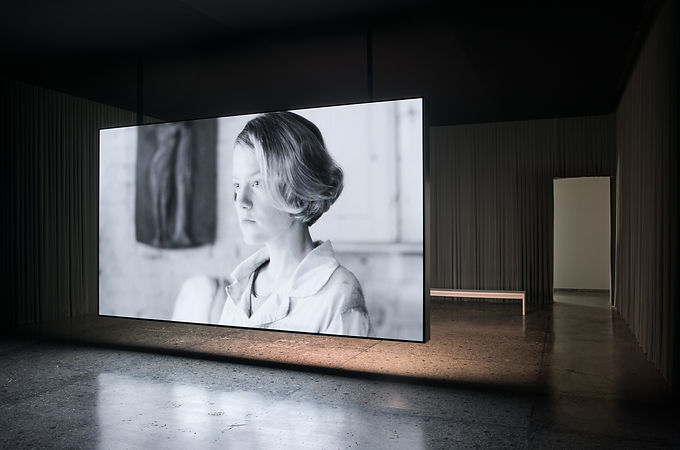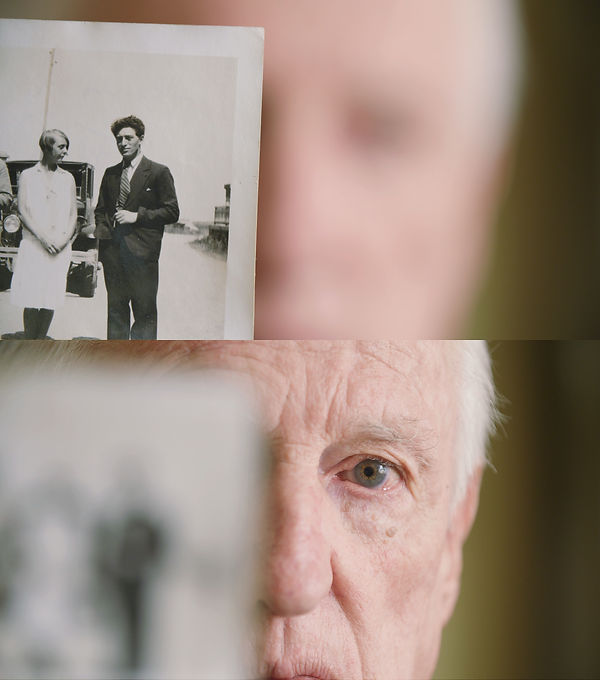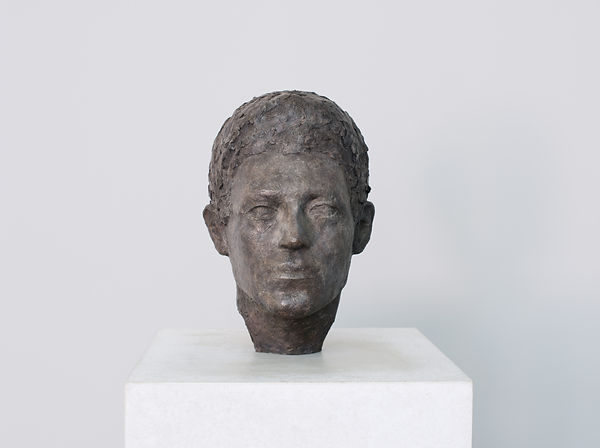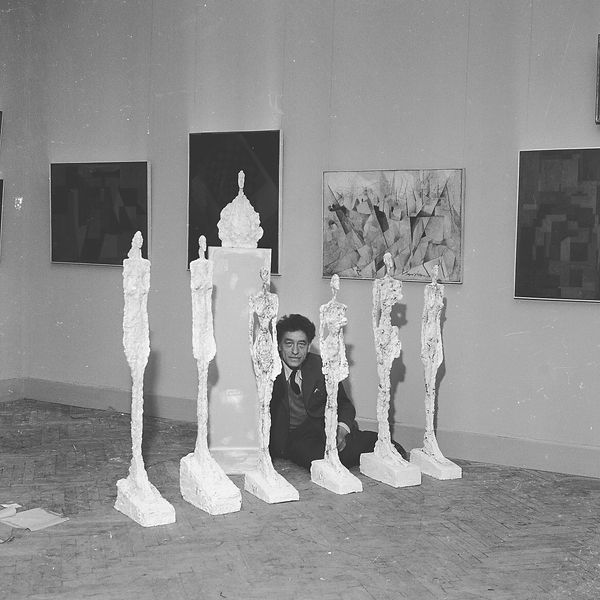Swiss Pavilion: Women of Venice.
Carol Bove andTeresa Hubbard/Alexander Birchler
57th International Art Exhibition
La Biennale di Venezia 2017
Giacometti at Tate Modern, London
by Floriana Piqué
Teresa Hubbard / Alexander Birchler
Flora 2017
Film still
Synchronized double-sided film installation with sound 30 mins, loop
Courtesy the artists, Tanya Bonakdar Gallery, New York
and Lora Reynolds Gallery, Austin
The simultaneous presence of a Swiss Pavilion dedicated to Alberto Giacometti’s work Women of Venice and the opportunity to see the same work, Women of Venice, 1956 in the complete and impressive retrospective at Tate Modern is a rare occasion to reflect on the legacy of a unique artist and the profound meaning of his oeuvre today.
Alberto Giacometti created Women of Venice in 1956 for the Biennale and deliberately decided to exhibit them in the French Pavilion to make a clear statement of his refusal to be constrained by national borders or ascribed to a specific country.
At the time, this gesture was perceived as a strong political declaration and also as an affirmation of the universal value of his work.
Despite the Swiss Pavilion’s having been designed by the artist’s brother Bruno in 1952, Alberto always maintained his decision. Philip Kaiser, curator of this year’s pavilion, recalls and updates, Giacometti’s intention in his choices, which resonate with the theme of Viva Arte Viva, title of this year’s Biennale, curated by Christine Macel.
The Swiss Pavilion presents two separate groups of works: the sculptures of Carol Bove and a complex installation by Teresa Hubbard and Alexander Birchler.

Installation view of Carol Bove's sculptures included
in Women of Venice at the Swiss Pavilion, 57th Venice Biennale, 2017
Courtesy of the artist, David Zwirner New York/London, Maccarone New York/Los Angeles.
In the courtyard of the Swiss Pavilion Carol Bove dialogues directly with Giacometti’s Women of Venice, showing her sculptures in steel, found steel, and urethane paint.
The three sculptures Woman of Venice I,II,III, 2017 allude to a substitution; in a certain way they deal with Giacometti’s refusal to show his work in the Swiss Pavilion.
Bove’s idea of substitution permeates all her sculptures; intentionally she plays with materials and colours.
Constantly Carol Bove’s work exudes minimalism, but in her own way, which is inspired by architecture and the sculptors of the 50s and 60s, a source she calls her idea of classicism.

Installation view of Carol Bove's sculptures included
in Women of Venice at the Swiss Pavilion, 57th Venice Biennale, 2017
Courtesy of the artist, David Zwirner New York/London, Maccarone New York/Los Angeles.
The central piece of Hubbard and Birchler’s installation on the interior of the pavilion is Flora, 2017, a double-sided film installation screening on one side a long interview with David Mayo, son of Flora and on the other side a staged performance of Flora Mayo in her studio in Paris in 1926.

Teresa Hubbard / Alexander Birchler
Flora 2017
Synchronized double-sided film installation with sound 30 mins, loop
Installation view: Swiss Pavilion, Venice Biennale 2017
Courtesy the artists, Tanya Bonakdar Gallery, New York and Lora Reynolds Gallery, Austin
Photo credit: Ugo Carmeni
Flora Mayo, an American artist, moved to Paris in 1925, where she met Giacometti in the sculpture class at the Academie de la Grande Chaumiere. Fellow students, they later became friends and lovers.
The 1929 crisis damaged the finances of Flora’s family that supported her in Paris, compelling her to go back to America in 1933.
This tragic decision shattered her artistic dream and, as an extreme choice, she destroyed all her works. This would prove to be the first step towards a wasted talent and a life spiraling into poverty, misery.
Few traces remain of her years in Paris: Giacometti’s Head of a Woman (Flora Mayo), 1926 and a photo of Flora and Alberto, probably 1927, with the bust she sculpted of him.

Teresa Hubbard / Alexander Birchler
Flora 2017
Film still,Synchronized double-sided film installation with sound 30 mins, loop
Courtesy the artists, Tanya Bonakdar Gallery, New York and Lora Reynolds Gallery, Austin
Those traces had been the evidence and starting point for artists Hubbard and Birchler’s long journey of researching, re-imagining, and reconstructing Flora Mayo’s art and life.
The encounter between the two artists and David Mayo and the fortuitous discovery of photos and other archival materials in David’s possession revealed the hidden life of his mother, redeeming in a very emotional and intense way the harshness of Flora’s last years.
The artists were able feel those emotions, to share them and transmit them to the viewer.
The exhaustive research, the sensibility of Hubbard and Birchler and the long interview with David are conveyed into a highly emotional artwork, not a mere documentary.

Teresa Hubbard / Alexander Birchler
Bust 2017
Silver gelatin print and brass sculpture with concrete base
Image: 88 x 72cm, Sculpture: 154 x 47,9 x 53,3 cm
Installation view: Swiss Pavilion, Venice Biennale 2017
Courtesy the artists, Tanya Bonakdar Gallery, New York
and Lora Reynolds Gallery, Austin
Photo Credit: Ugo Carmeni
On the second side of the double-sided film installation an actress enacts Flora in her studio sculpting Alberto’s bust, while, with a mirror effect, an actor is enacting Alberto sculpting Flora’s bust, both being simultaneously model and sculptor.
The mirroring is reflected in the film installation, where David on one side seems in conversation with his mother on the other side.
"With the two-sided screen," - emphasizes Teresa Hubbard in the catalogue – "we are thinking about the choreography as a hybrid form of storytelling – a filmic essay, a detective story, in the sense of exploring a relationship between knowing and unknowing."

Teresa Hubbard / Alexander Birchler
Bust 2017
Silver gelatin print and brass sculpture with concrete base
Image: 88 x 72cm, Sculpture: 154 x 47,9 x 53,3 cm
Installation view: Swiss Pavilion, Venice Biennale 2017
Courtesy the artists, Tanya Bonakdar Gallery, New York and Lora Reynolds Gallery, Austin
Photo Credit: Ugo Carmeni
The reconstruction of Flora’s sculpture of Giacometti’s bust, the same that appears in the photo and the film, constitutes the second work of the couple Hubbard/Birchler, installed in a small, adjacent room with the photo of Flora and Alberto.
This is a different way of reviving the artists’ intentions, not just, but of bringing back to life Flora’s sculpture.
Giacometti sculpture of Flora’s head – Head of a Woman (Flora Mayo), 1926 – appears at Tate in the opening room in the presentation of a group of heads realized in different materials and throughout the years.
Flora’s head is in plaster, a material Giacometti loved for the freedom he could obtain from it, freedom of working and re-working, molding and destroying, adding and subtracting many times over the day, the days in his studio, while resurfacing his layered memories. A never-ending process.

Alberto Giacometti
Head of Woman [Flora Mayo] 1926
Painted plaster 31.2 x 23.2 x 8.4 cm
Collection Fondation Alberto et Annette Giacometti, Paris
© Alberto Giacometti Estate, ACS/DACS, 2017
Courtesy of Tate Photography
The painted plaster – blonde hair, blue eyes, red lips – shows a young woman full of life, hope, aspirations and enthusiasm. Here we understand David Mayo’s feelings – as we see in the film by Hubbard/Birchler – when he is confronted for the first time with this sculpture and the unfolding of details, completely unknown to him, of his mother’s life.
The reunion at Tate Modern, after 60 years, of eight of the nine surviving sculptures that comprise Women of Venice, 1956 can be considered the focal point of Giacometti’s retrospective.
Molded in plaster, unusually they don’t refer to a model; they come purely from Giacometti’s imagination.

Woman of Venice V
1956
Painted plaster 113.5 x 14.5 x 31.8 cm
Collection Fondation Alberto et Annette Giacometti, Paris
© Alberto Giacometti Estate, ACS/DACS, 2017
Courtesy of Tate Photography
Hieratic, they stand silent, two in painted plaster, each one of them unique in its strong fragility. Silence and solitude erased immediately by the cohesion of the group.
"All of them are different" – noted Jean Jenet when he first saw them - "…Seen in semi-profile, the oscillation from woman and goddess is perhaps the most disturbing thing about them. Sometimes, the emotion is unbearable…I cannot stop myself coming back to this people of gilded – and sometimes painted – sentinels who, upright, immobile, are keeping watch." (Katy Wan in catalogue. Jean Jenet, ‘L’Atelier d’Alberto Giacometti’, Derriere le miroir, Paris 1957, trans. by Charles Penwarden, in Alberto Giacometti – The Artist’s Studio, London 1991).

Photograph of Alberto Giacometti and his sculptures at the Venice Biennale, 1956
Archives of the Giacometti Foundation
Courtesy of Tate Photography
The complexity of the works in the Swiss Pavilion adheres in full to the spirit of this year’s Biennale. A Biennale where numerous and unique women artists contribute to highlight the pregnant presence of the absence of Flora Mayo’s work.

Floriana Piqué is an art critic and independent curator. She lives and works in London.
The 57th International Art Exhibition La Biennale di Venezia is on view until 26 November 2017.
Giacometti at Tate Modern is on view in London until 10 September 2017.
